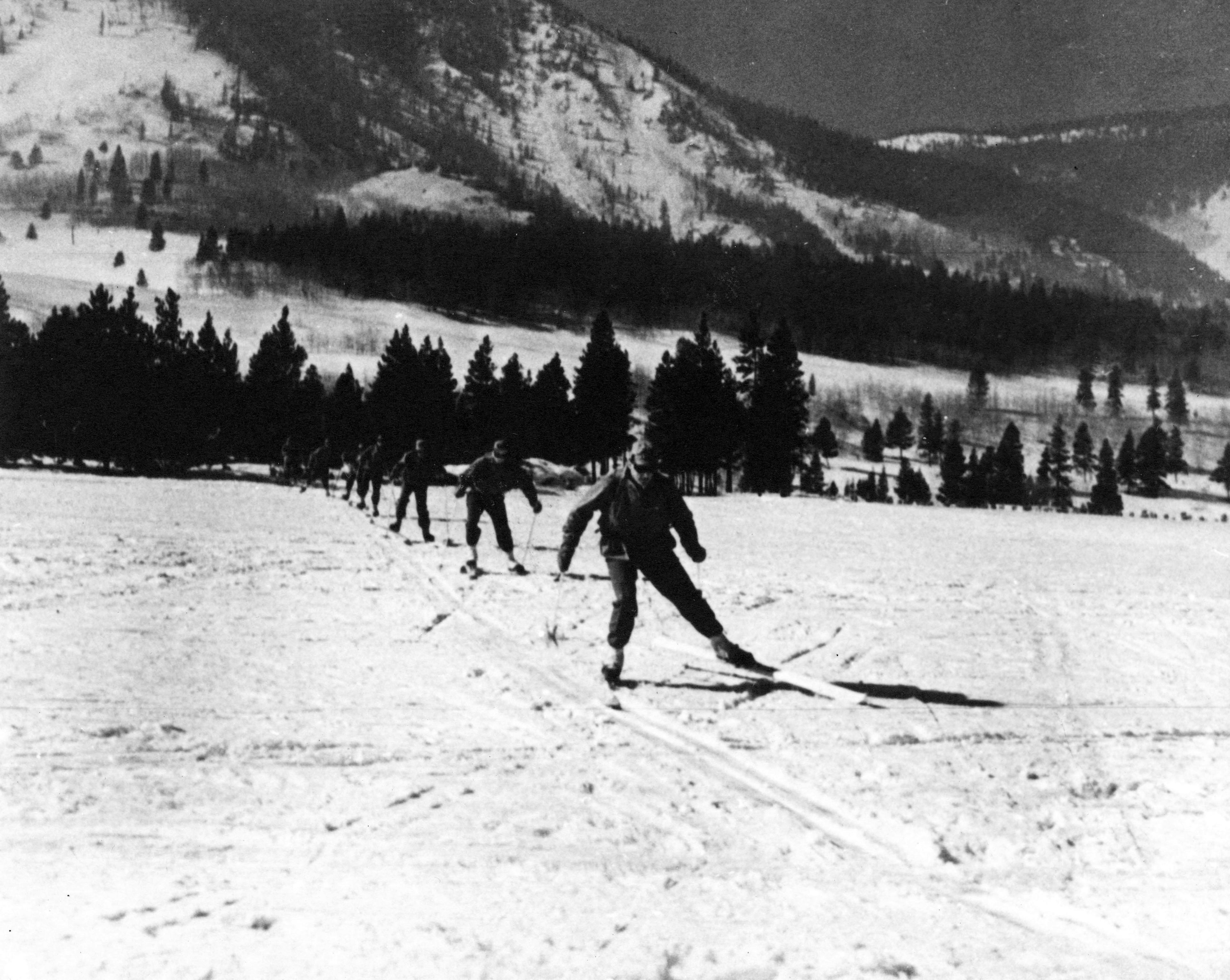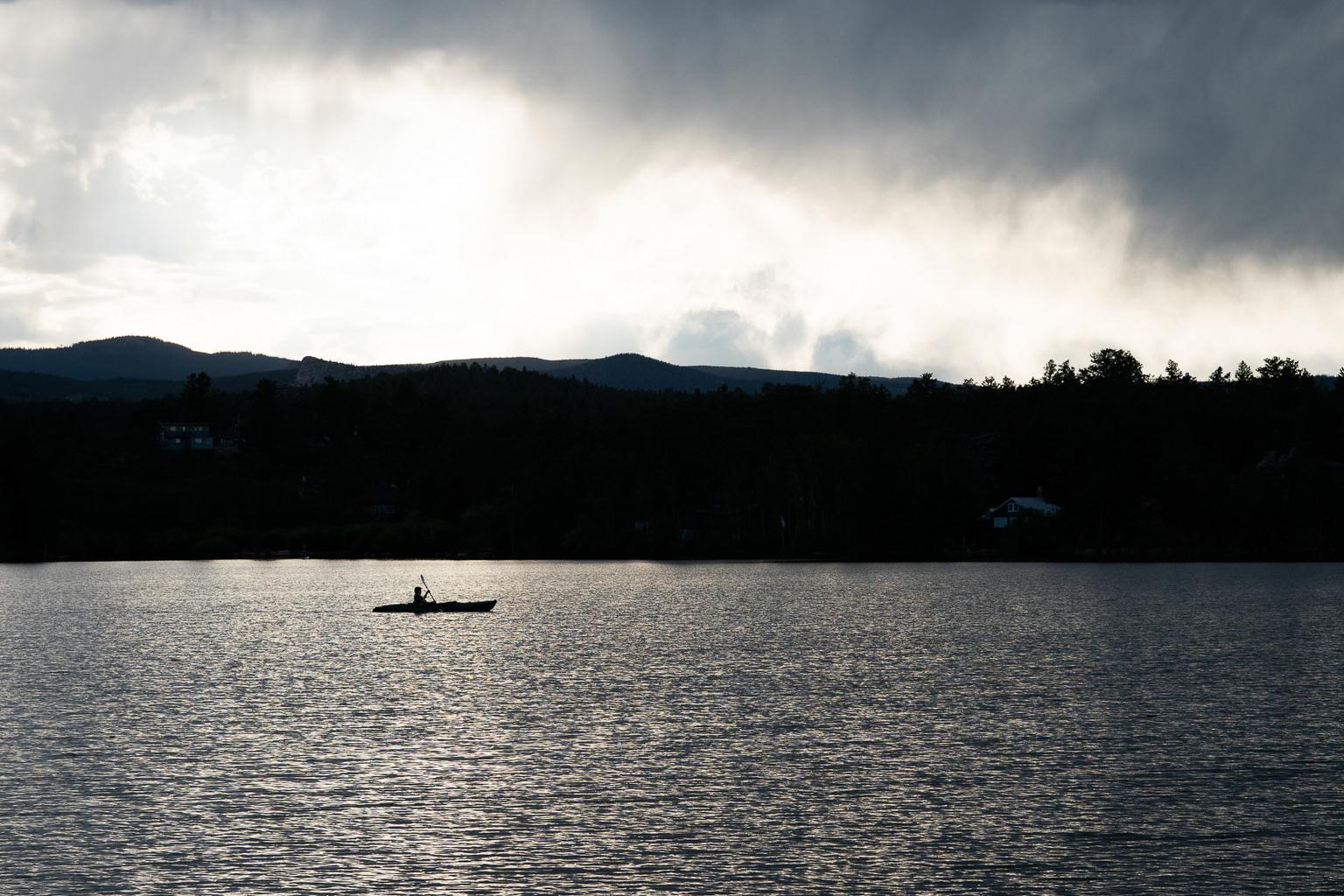
Extreme skier Chris Anthony told Colorado Matters Tuesday that he hopes to teach children about the 10th Mountain Division. Now, he's using the film he helped create, “Climb to Glory: The Legacy of the 10th Mountain Division,” to do just that.
“Living in Vail Valley in Colorado, you hear about this 10th Mountain Division,” Anthony said in the film. “You see these tributes all over, and it just made me that much more intrigued to find out who they were.”
Anthony's curiosity spurred us to collect some coverage about America's first ski troops from around the state and over time.
The men of the 10th Mountain Division began their training at Colorado's Camp Hale in 1943. They would later go on to fight essential battles in World War II. And their legacy has shaped Colorado's ski industry, as well as inspired multiple films and books.
2014: 10th Mountain Division veteran dies at age 95
In late 2014, Earl Ervin Clark, who served in the 10th Mountain Division in World War II, died at his Littleton home at age 95.
"Now as we lose men, we’re not just losing men of the 10th Mountain Division," Clark told CPR's Ryan Warner in 2007, "We’re losing very very close friends."
2007: Film documents 10th Mountain Division
Filmmaker Abbie Kealy interviewed 100 living members of the 10th Mountain Division for her documentary, "The Last Ridge." Kealy's uncle served in the 10th Mountain Division and was killed during the first phase of combat.
Some of the most severe training happened in Colorado, "way up high by Leadville," said Kealy. "The training was so difficult that some thought it was tougher than battle," she said.
2003: The gear of the 10th Mountain Division
Clark spoke with CPR’s Dan Drayer about a 10th Mountain Division exhibit at Boulder History Museum in 2003. The exhibit captured primitive early history of skiing, as well as the heavy gear that soldiers carried.
"The things we got initially up there weighed too much. ... We even had a song about 90 pounds of rucksack," Clark said. Audio below courtesy of the 10th Mountain Division Descendants:
"But as timed passed along we learned what we could discard and what we didn’t have to carry with us to survive at high elevations in the winter time. And the pack finally got down to a sensible weight."
1989: 10th Mountain shapes ski industry
Commercial skiing wasn't always big in Colorado. But after the war was over, many 10th Mountain division veterans returned to experience the snow again, wrote the Denver Post.
In fact, two authors told Colorado Matters that many of the smaller ski areas closed after World War II, when the newer and larger ski areas emerged.
In 1989, the Denver Post remembered the many figures who ultimately formed some of Colorado's iconic ski slopes:
Among those who returned was Peter Seibert, a New Englander who, after a stint in the Aspen Ski Patrol and as general manager of Loveland Basin, became the driving force behind the founding of Vail.
Seibert formed Vail Associates, launching what was to become the nation's largest ski resort. Among his early investors were 10th Mountain Division veterans Ben Duke, Jack Tweedy, Dave Dodge and Tim Tyler. Seibert also recruited Bob Parker, a mountain trooper who had returned to Colorado as the first editor of Denver- based Skiing Magazine.[…]
The contributions of 10th Mountain Division veterans didn't stop there. The late Larry Jump was a founder of Arapahoe Basin; Gordon Wren was integral to the early development of Steamboat, and also managed Loveland and Jackson Hole, Wyo.; Steve Knowlton, who became the first president of Colorado Ski Country USA, launched skiing at The Broadmoor along with Leon Wilmot, and George Hurt began Hidden Valley, now called Ski Estes.
Read the Denver Post's full story.
1959: First national 10th Mountain Division convention
Veterans of the 10th Mountain Division planned special charter busses and chartered flights for their first national convention, reported the Aspen Daily Times in April 1959. They planned a trout fry in the remains of Camp Hale to coincide with the dedication of a new memorial to the men.
In addition to the dedication and visit to Camp Hale [sic] a reunion banquet, a spring skiing trip, a beerbust-songfest and sight seeing are also on the agenda.
Read Aspen Daily Times' full story.
1945: "Men of steel, all of them"
The Steamboat Pilot remembered Sargent Torger Tokle, "internationally known ski artist," in July 1945. Tokle entered the United States in 1939 and enlisted in the 10th Mountain Division carrying his own skis, the paper reported.
In World War II, the men faced a climb that lasted 10 hours:
Marching in small detachments at night, the mountain men were finally collected in a small valley at the base of the ridge, and as darkness fell on February 18, the order to attack was whispered down the line. Up they went, bound together by ropes as they scaled sheer cliffs, hacking footholds in the ice, whipped by a storm that never abated its fury, and at 5:30 in the morning, after 10 ghastly hours, the summit of Riva Ridge was reached. A moment to catch breath, and then they fell upon the unsuspecting Germans, killing and capturing.









